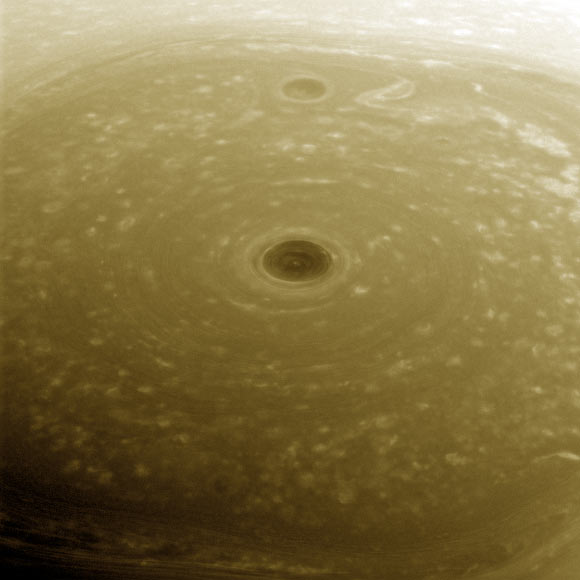NASA’s Cassini robotic orbiter captured this view of Saturn’s north polar vortex on April 26, 2017, the day it began its Grand Finale, a daring series of 22 weekly dives between the gas giant and its rings.

Saturn’s north polar region is pictured in great detail in this Cassini image (false color) obtained on April 26, 2017, from a range of 166,000 miles (267,000 km). This view looks toward the sunlit side of the rings from about 44 degrees above the ring plane. Image credit: NASA / JPL-Caltech / Space Science Institute.
Cassini is currently in the Grand Finale phase, the final phase of its long mission.
Over the course of 22 weeks from April 26 to September 15, 2017, the spacecraft is making a series of dramatic dives between the planet and its icy rings.
The mission is returning new insights about the interior of Saturn and the origins of the rings, along with images from closer to the giant planet than ever before.
The image of Saturn’s north polar vortex was taken with Cassini’s wide-angle camera using a spectral filter which preferentially admits wavelengths of near-infrared light centered at 752 nm.
The view was obtained at a distance of approximately 166,000 miles (267,000 km) from Saturn.
Although the north pole is still bathed in sunlight at present, northern summer solstice on the planet occurred on May 24, 2017, bringing the maximum solar illumination to the polar region.
Now the Sun begins its slow descent in the northern sky, which eventually will plunge the north pole into Earth-years of darkness.
Cassini’s long mission at Saturn enabled the orbiter to see the Sun rise over the north, revealing that region in great detail for the first time.
According to NASA, Cassini will plunge into Saturn on September 15, sending new and unique science about the planet’s upper atmosphere to the very end. After losing contact with Earth, the spacecraft will burn up like a meteor.







